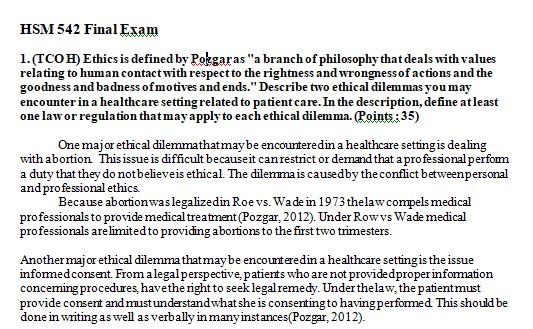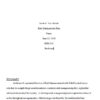Description
HSM 542 Final Exam with Answers
- (TCO H) Ethics is defined by Pozgar as “a branch of philosophy that deals with values relating to human contact with respect to the rightness and wrongness of actions and the goodness and badness of motives and ends.” Describe two ethical dilemmas you may encounter in a healthcare setting related to patient care. In the description, define at least one law or regulation that may apply to each ethical dilemma.
- (TCO D) A patient’s family may be actively involved in end-of-life decisions for patients who are incapacitated or incompetent. Compare and contrast two legal cases that address the rights of families in participating in end-of-life decisions. For each legal case, identify how the case either contributed or detracted from the rights of families.
- (TCO G) Identify three medical liability classes and provide a specific example for each class. Explain how the individual or entity behaved or acted in a way that may result in legal action.
- (TCOs E and F) Compare and contrast two common models for managed care organizations. For each model, identify the inherent incentives that exist for the physicians who provide care to the patients within the model.
- (TCO G) Discuss the differences between risk management and continuous quality improvement. How do the goals of each program differ? What are the similarities between the functions of each?
- (TCOs A and B) What do you consider the most pressing ethical issues surrounding genetic testing? Provide at least two examples, and explain why you consider these most important. hsm 542 final exam
- (TCO C) Identify and discuss the four components of HIPAA. For each component, identify a violation that may occur in a healthcare setting that might lead to an investigation by the OIG.




